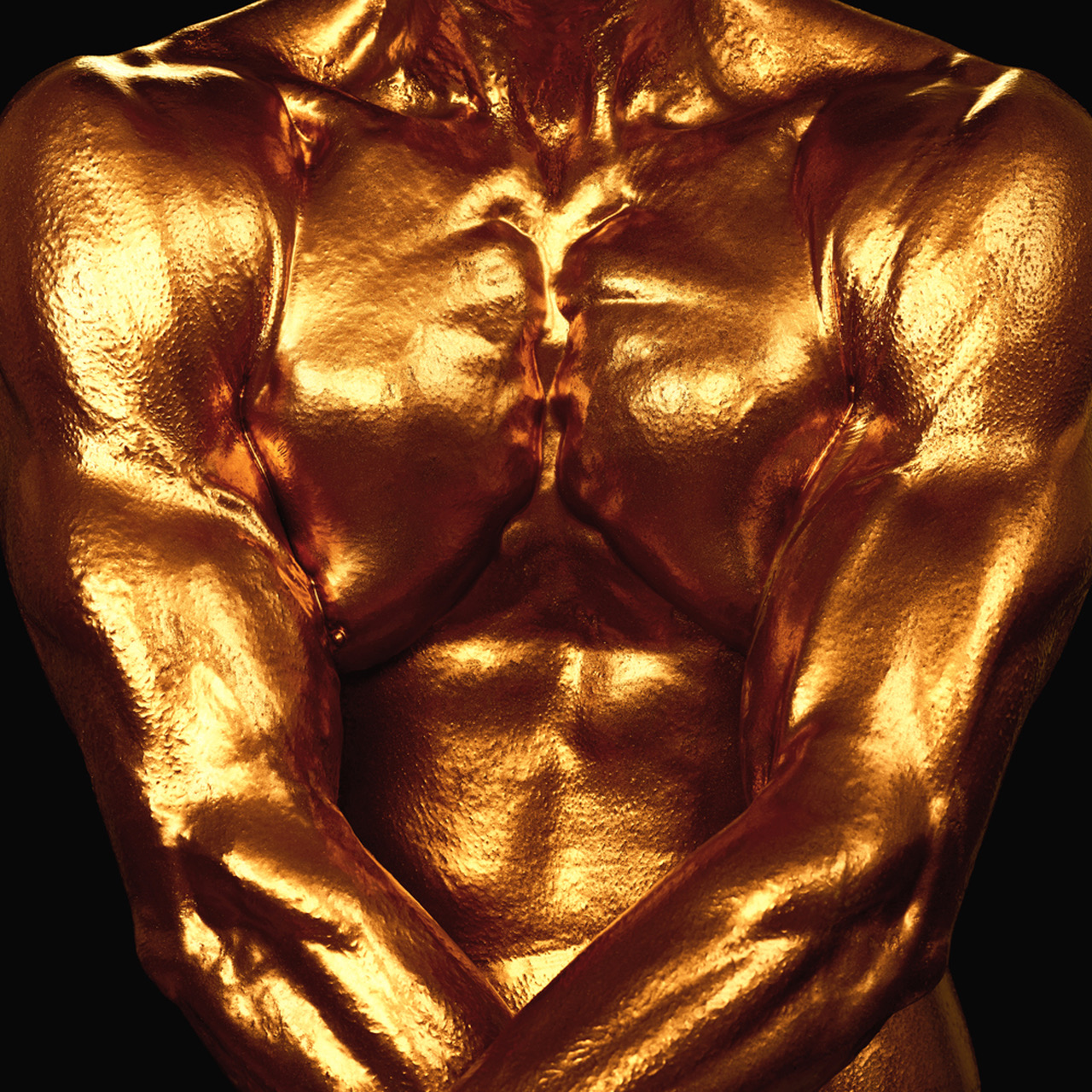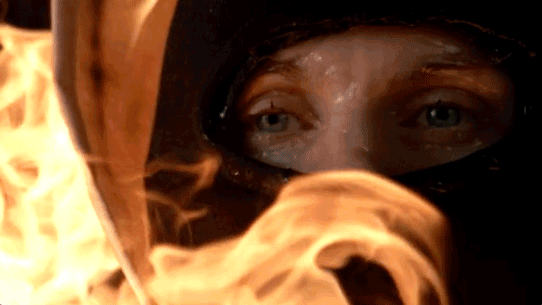Cassils Makes Work That Calls Attention to Violence Against LGBTQI Bodies

Audiences are often shocked by the sculptural, performance, image and video work of trans artist Cassils, but “shocked” is the same reaction that Cassils wants audiences to have in reaction to violence being perpetrated against the trans community. Since the president has rescinded an Obama-era executive order allowing transgender students to use the bathroom matching their chosen gender identities, Cassils has been working on a series of new works and performances. All of it is meant to call attention to violence against the LGBTQI community. The works will join an exhibition as Cassils’ Creative Capital project Monumental premieres at the Ronald Feldman Gallery September 16 – October 28, 2017, with a special performance on the opening evening.
We caught up with the artist as they were preparing for the exhibition.
Alex Teplitzky: Each sculpture in this series has a unique story to it, but all of them propelled by the violence done to transgender bodies. Can you talk through some of these sculptures we’ll see at the exhibition?
Cassils: Each sculpture stems from a live durational performance. Resilience of the 20% is a cast bronze remnant from a former performance called Becoming an Image, initially performed at the ONE Archives, the largest LGBTQ archive in North America. The task was speaking to the T’s and Q’s missing in this archive. In Becoming an Image, I unleash an attack on a 2000 lb. clay block in total darkness. The only way in which the performance is made visible is through the act of it being photographed. What you experience is a live photograph burned into your retina. At the end of the performance, when the lights are turned on, you encounter a sculpture that is a faithful index of every punch and kick I have thrown; the formal shape of a violent attack.
Working with Creative Capital, I have cast these bashed remnants and turned them into more durable materials. The bronze cast, Resilience of the 20% (named after a sickening statistic from Amnesty International, that the murders of trans people went up 20% worldwide in 2012) was to be placed in public sites where acts of violence have occurred against trans and gender nonconforming people. However, rather than pick one site, as one usually does when placing a monument, I instead decided to highlight several sites. I premiered the performance Monument Push in Omaha, NE, shortly after the election. Working with Alex Priest, a curator from the Bemis Center of Contemporary Arts, we made in-roads with the local LGBTQ community in Omaha. These allies and activists chose five sites where acts of unseeable violence have occurred in their city. Collectively, we pushed the 1300 lb. bronze on a 900 lb. plinth to each of these sites. Like the performance of Becoming an Image, Monument Push speaks to erased histories of violence. Whose lives are worth remembering, and whose histories are erased?
Unlike the precious material of bronze, PISSED is made entirely of bodily waste, speaking to the precariousness and disposability of trans lives. PISSED is a collection of every drop of urine that my body has passed since Trump recended the Obama-era order allowing trans teens to urinate in their bathroom of choice (versus the gender they were assigned at birth.) All of this urine will be encapsulated in a glass cube showcasing the entire amount of fluid that one body has to mitigate as a result of a government ordinance. Choosing the cube, this also formally nods to art historical male artist practices such as Hans Haacke’s Condensation Cube or other minimalist explorations. However, unlike these works, PISSED injects a political content into a formal exercise.
Inextinguishable Fire is a performance for the camera that engages spectators with the media’s constructed images of violence and war. I perform a treacherous fire stunt using Hollywood techniques: the 14-second live burn (limited to the length of a single exhale to protect the esophagus) is extended to 14 minutes of slow motion flame, shot at 1000 frames per second. Glass blown sculptures that encapsulate the form of a single breath accompany them. The resulting amorphously shaped objects, Encapsulated Breaths, resemble fragile speech bubbles, and speak to the precarity of the voice and political expression.
Hillary Bonhomme: By using your physical body’s capabilities as the impetus for the performance, the work doesn’t really posses a distinct beginning or ending. Can you elaborate on how that mental process manifests differently from location to location, place to place?
Cassils: My works definitely do have beginnings and endings. The impetus for starting them is often in relation to a world event, a social crisis, a personal need for self-manifestation. Certainly, the meanings of the performances change depending on the context that they’re presented in. In my performance The Powers That Be—a performance in which I worked with a fight choreographer to stage movement for a several person fight but only my body was present—solicited completely different reactions in Finland and the United States. The Fins were shocked by the violence of the work, and the Americans, by my nude body.
Becoming an Image, performed at the ONE Archives, speaks to the erasure and silence of histories of violence in the archive. However, performing this in Zagreb, Croatia, the audience interpreted it against the dark history of the ethnic cleansing in Yugoslavia in the 1990s. Inextinguishable Fire was made against the backdrop of Ferguson and Baltimore uprisings around unjust treatment of people of color by the police, but when it was screened publicly at the Southbank Center in London, England, the piece was pulled the day after the bomb attacks in Paris.

Becoming An image, Performance still, Philadelphia Academy of Fine Arts Historic Casting Hall. 2016 Photo: Cassils with Zachary Hartzell
My work Advertisement: Homage to Benglis was the key art for a blockbuster exhibition in Germany. When the advertisements went up, in the Deutche Bahn, the government-owned German rail system, my image was censored for being “shameful, sexist, and pornographic.” Though this delighted me in its deep irony, I realized the image was not being censored because of its explicit homoerotic possibilities, but because they were reading my trans nonconforming body as a woman’s body, therefore equating what they perceived as “breasts” as pornography.
As a transmasculine-identified person who chooses not to have a double mastectomy, I feel the problem does not lie within my body, but within society’s perception of my body. These perceptions of non binary positions flux and ebb in their sophistication in different parts of the world.
Alex: You are an artist and an activist. Do you see your performances as an entry to empathizing with trans people? Is it more for people who understand but need more information? Are your pieces tied to more to your identity or the larger questions around identity for people who are trans?
Cassils: I am an artist. I am not an activist. Activists have real-world policy-changing effects. They do not work with metaphors as artists do. I do hope that my work can be a platform to discussion for changing minds that might move towards changing such actions, but I cannot claim that they do so. I am not only interested in speaking to a trans audience, but to a greater audience. I believe art is for all people.

A gif excerpt of Inextinguishable Fire featuring Cassils
That being said, I am a trans artist, so my work is rooted in my subjectivity, but it is not the be all end all of my work. I am very consciously not working with the representation of my own body in the two main sculptures of the show. Although abstract in nature, these works speak to the body, the processes of the body, and traces of the body, that all of us can relate to. All of us can imagine the pain of being smashed in the face by a fist. We can summon to mind the unbearable embarrassment of pissing your pants from not being able to access a bathroom. The materials found in this exhibition, are as diverse as precious metal and human waste, and speak to value placed on lives without specifically showing the body. My work challenges viewers to examine their various modes in the participation of repeated scenes of violence, as victims or instigators, as bystanders, as witnesses, and as consumers of these stories.
As an artist, I create artworks that rupture these routine processes of identification, objectification and abjection, putting pressure on empathy and its failures. What I want is a perceptual and effective recalibration from the viewer. My work is interested in exploring the interconnecting and overlapping subterranean circuits of racism, transphobia, and xenophobia, as a move through our bodies, the media, and the everyday. I want to explore the moment of conflict and the unconscious mental life that contributes to our political present.
To see more information about Cassils’ exhibition at Ronald Feldman Gallery, opening September 16, click here.
*This closing statement is paraphrased and taken from an article written by Julia Steinmetz, “The Powers That Be,” written in 2016, for the catalogue “Breaking News: Cassils,” presented by Tufts University, school of the Museum of Fine Arts.
